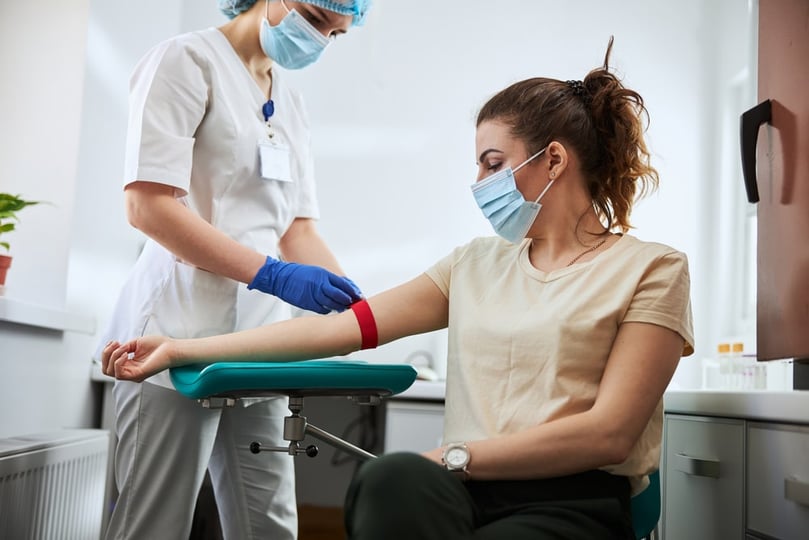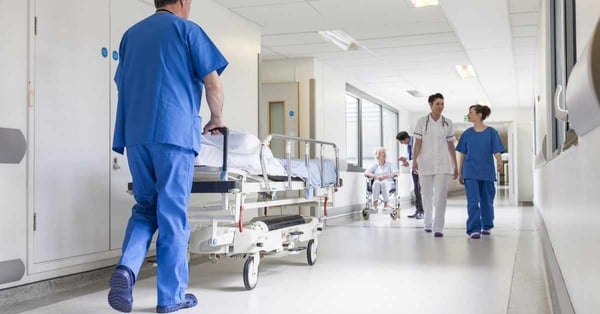- Blog Overview
- Knowledge
- Streamlining patient journey for a more efficient lab

Streamlining patient journey for a more efficient lab
Eric Rutherfurd |January 25 2023 | 9 min
Running a lab can be overwhelming. From checking in patients, collecting specimens, running analyses, and relaying results to patients and providers, it is easy to lose sight of a critical component - the overall patient experience.
Since the Affordable Care Act (ACA) was passed in 2010, patient experience now plays a critical role in shaping financial decisions, reimbursements, and penalties. However, many labs continue to use manual processes that do not elevate the experience. Improved efficiencies, automation, and optimized workflow all contribute to improved care, top-performing staff, and the most contented patients.
How streamlining patient journey makes for a more efficient lab
In many cases, patient flow and customers served are not based on statistics but on an estimation or gut feeling of the staff. Accurate recording of the number of patients, wait times, service times, and other visit metrics can only be consistently recorded with a comprehensive queueing system.
By automating the arrival process at each touchpoint, your lab can manage patient flow and generate actionable data for informed decisions. Using reports and real-time dashboards you can see not only what is happening, but also predict future trends, and patient flow. Further, you can:
- Allocate resources to better enhance care delivery
- Improve wait times in the lobby and with clinical services
- Deliver personalized care and communication to each patient
The role patient journey management technology plays in streamlining operations
The technology used for patient journey management inherently leverages the metrics collected from patients during their visits. Further, through messaging and communication channels, patients are continually informed about their visit, where they are in line, and what to expect. This is essential because expectations of today’s customers are higher than ever ( 81% of consumers rate a good experience as extremely important ). And good patient experiences are associated with higher profitability, according to a Deloitte research report.
Other technology components include streamlining patient flow using self-service kiosks, mobile check-in, virtual waiting rooms, easy-to-use staff applications reports, and analytic tools. All these parts come together to form a robust, mature enterprise-class turnkey solution that should mirror your laboratory workflow and best practices.
Delivering better patient experiences
Walk-ins are the norm in a laboratory setting. Having a system enables you to manage patient arrivals more efficiently with a check-in kiosk or online via a mobile phone. As such, patients can access estimated wait times while monitoring communications throughout the visit.
By using mobile tickets at check-in, patients can use their phone as their connection to the lab. The system issues a mobile ticket via an SMS text, providing insights into where they are in the queue and the estimated wait time. In addition, custom messages can be delivered automatically at different stages of the visit to maximize capacity and number of patients seen.
Enhancing the employee experience
Apart from the patient experience, the other side of the efficient lab is making sure staff is delighted. Here, patient management technology equips staff with the right tools and data to know who is arriving, services that will be delivered, and resources that are available. Automation reduces repetitive efforts, provides transparency, and supports staff processes.
Some specifics include the ability to access real-time queue management tools and optimize patient flow at a moment's notice. And other functions like transferring patients from one queue to another, adding notes, or sending custom messages.
With more visibility into patient flow, your team can provide better and more personalized care while reducing stress levels and helping staff plan their days. Such predictive analytics applies across your staff’s workflow to reduce burnout, eliminate wasted time, improve morale, and enhance the relationship with patients.
Orchestrating better patient care and improving operations
A key component of patient journey management is collecting all patient visit data - from pre-arrival to post-care. The data can be used to analyze historical visit information or be consumed in dashboards showing real-time activity. Such information can evaluate workload balance, staff efficiencies, and resource utilization.
Improving operations can also be achieved by using insights to forecast and estimate trends. This allows the lab to be nimble and proactive with respect to reassigning staff or resources based on usage and need.
Likewise, the platform unlocks the power of patient feedback by collecting survey responses across the patient journey to identify bottlenecks and areas of improvement. This can lead to efficiency gains that improve the bottom line by optimizing processes and the use of resources.
How one medical testing facility improved patient flow and experience with patient journey management technology
Alliar Médicos à Frente is one of Brazil’s largest medical testing companies. Impressive growth led to the need for more efficient patient flows through the company’s centers. Bottlenecks in patient flow resulted in up to 90-minute wait times before a patient reached the counter. And once there, they would have to fill out forms, reach out to their insurance provider, and wait for ID verification, further increasing the wait time.
To reduce wait times and improve the patient experience, the company leveraged Qmatic, a patient journey management platform. Through its online monitoring system, self-service kiosks, and real-time data reports, Alliar Médicos à Frente was able to reduce wait times from an hour and a half to five minutes. These results are a fraction of what can be accomplished with patient journey management technology.
Making the decision to streamline lab operations
Streamlining your lab operations starts with clearly understanding your patient journeys. You can't simply implement a patient management technology and expect it to work overnight. As the lab director, you must first focus on mapping out the patient experience to identify gaps and opportunities across the patient journey (check out this guide to learn more). Doing this will provide you with a roadmap on how to best leverage a patient journey management solution to reach the desired result.
Interested in exploring additional ways you can improve your lab? Download your copy of our Transforming Patient Experience in Laboratories white paper for a closer look.
Topics
Patient Journey







